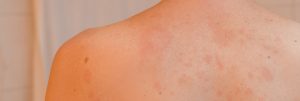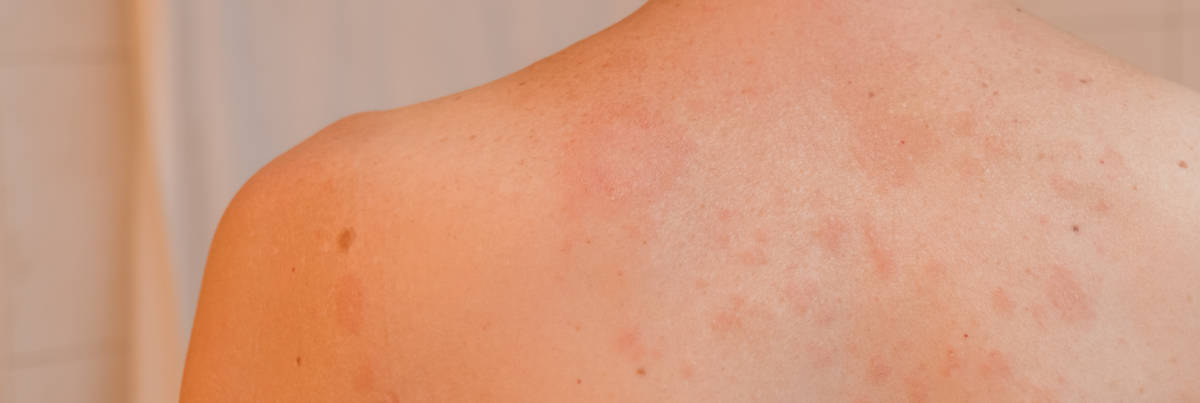 Big sunglasses. Cool umbrella drinks. Later and more beautiful sunsets. Summer is just around the corner and with all of these fun aspects come the unavoidable sour aspects of a brutal sun beating down on our tender faces and limbs. As we get the long days underway, we cannot ignore the need to protect our skin. Continued and repeated sun exposure can cause permanent effects to your skin. As the ultraviolet radiation exposure accumulates over a lifetime, the radiation can cause DNA changes which can show up as actinic keratosis and skin cancer.
Big sunglasses. Cool umbrella drinks. Later and more beautiful sunsets. Summer is just around the corner and with all of these fun aspects come the unavoidable sour aspects of a brutal sun beating down on our tender faces and limbs. As we get the long days underway, we cannot ignore the need to protect our skin. Continued and repeated sun exposure can cause permanent effects to your skin. As the ultraviolet radiation exposure accumulates over a lifetime, the radiation can cause DNA changes which can show up as actinic keratosis and skin cancer.
In addition to these serious changes that can result in keratosis and skin cancer, sun damage can lead to age spots, redness from broken capillaries, diffuse hyperpigmentation, wrinkling, and altered skin texture. A lot of these conditions are superficial, but that does not make them harmless.
The cycle of sun damage started with the absorption of the radiation into the skin of both UVA and UVB rays. UVA rays penetrate deeper into the skin than UVB rays, which stay on the surface. The radiation triggers activity in the skin cells as the cells attempt to protect your DNA from the radiation. We see this activity through the darkening of the skin’s pigment. If the skin continues to be exposed to this damage over time, the DNA can be damaged. If the DNA is damaged and begins to send the wrong signals to the cells, the incorrect cell division process that results can cause skin cancer.
A regular regimen of sunscreen, moisturizers, and exfoliation can help with early, superficial signs of skin damage. Sunscreen helps shield the skin by creating a barrier between the skin and the UV rays. Sunscreen’s effects can be nullified if not used correctly. Applying a high SPF broad spectrum product and reapplying it at regular intervals are critical to ensure you are getting the full protection. If you are more active (sweat a lot, swim a lot) then you will need to reapply more often.
Moisturizers are great products that, if used on a daily basis, can help reverse some of the superficial effects of sun exposure-related damage. Dullness and fine lines can be kept at bay with proper hydration. Water-based moisturizers rehydrate better than oil-based moisturizers as they absorb into the skin faster.
Exfoliating will remove the extra layers of dead cells; these very top layers will be holding the extra pigment from the exposure which accumulates over the years. Chemical products that exfoliate contain glycolic acid (between 5 to 8 percent concentration) are common in retail drugstores. Glycolic acid helps brighten the skins appearance while it remove the built up layers of pigment.
Remember – an ounce of prevention is worth a pound of cure. To keep your skin looking its best and to it healthy for years to come, you need to protect it and check it regularly. Noticing dark spots or other signs of damage? If you want more immediate results, you should consult with a dermatologist for procedures especially suited for your specific condition.
Stop by one of our fantastic office that services Indianapolis, Bloomington, Lafayette, West Lafayette and Fishers residents. We also work with many other locations found around Indiana. We always welcome new clients!
Disclaim: This blog provides general information and discussion about medical, cosmetic, mohs, and surgical dermatology. The words and other content provided in this blog, and in any linked materials, are not intended and should not be construed as medical advice. If the reader or any other person has a medical concern, he or she should consult with an appropriately-licensed dermatologist or other health care worker.
